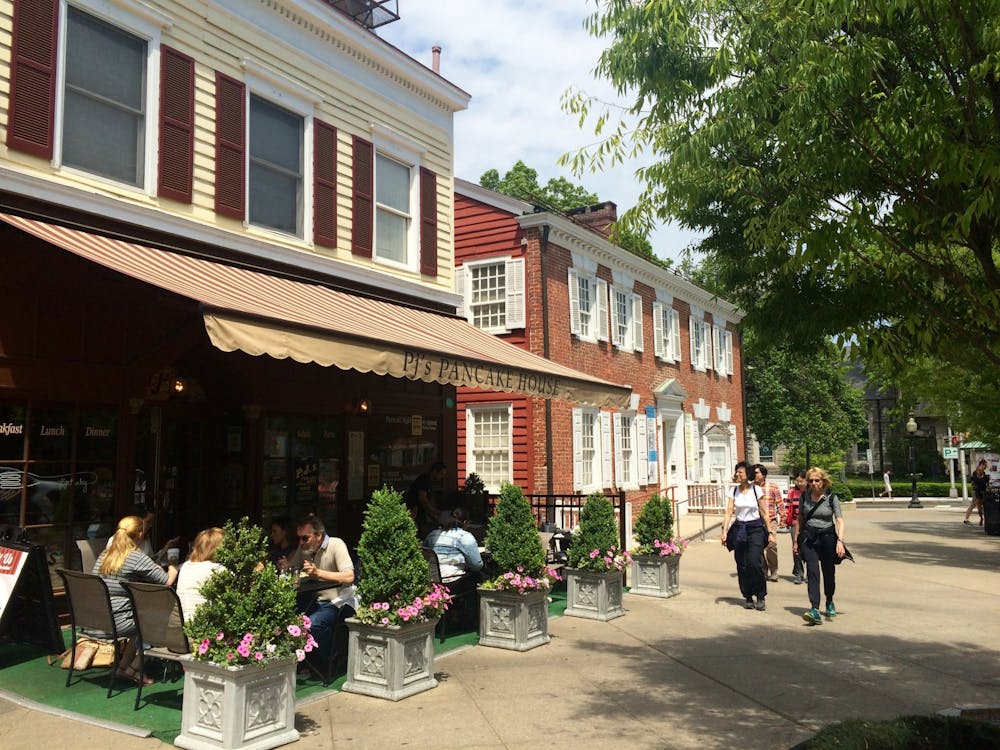This past weekend, on Oct. 2, The Princeton University Art Museum hosted a children's talk titled "How to Paint with Ketchup," which was delivered by a recently retired docent, Hank Segal. This event is part of a series of children's talks that the museum hosts every Saturday at 11 a.m. throughout most of the academic year, and is directed towards an audience of children, ages 5 through 9.
On Sat. morning, a bubbly group of children, accompanied by their parents, gathered in the University Art Museum for the talk. As I discovered upon arrival, however, a second activity for children was being held at 10 a.m., featuring a drawing exercise in the Precolumbian art section of the museum. This drawing class was led by Bob Jenkins, who warmly introduced himself to the children as "Mr.Bob." Pointing to a figure behind the glass which was to act as the model for the children's drawing, "Mr. Bob" commented on how it "looked more like a chief — someone with authority." Explaining that the piece was created in a time when "people saw things in a more simplistic way," he instructed his little audience that they were going to use basic shapes including "circles, cylinders and triangles to portray the different parts of the figure."
Each child started with a pencil and a sheet of paper with a pre-drawn plumb line as a guide. Step by step, the instructor patiently guided the children's work. Every now and then, the children would interject their opinions on the subject of their progress. One stated, "It [the drawing] looks like a window." Another responded, "It looks like a shopping cart."
The children also seemed to take great delight in the mischievous activity of hiding their pencils on a regular basis, until one finally "stabbed" himself. Despite the childish fun, each individual left the workshop proudly clutching an impressive built-up stick figure drawing that depicted the model.
Upstairs, at 11 a.m., a sizeable group of young people had gathered to hear Segal's presentation on "How to Paint with Ketchup." The talk was centered around a work of mixed media titled "The Cedar Bar," completed in 1986.
The highlight of the talk came when Segal asked his audience, "What is a bar?" A young child cheerfully responded, "A place where people get breakfast!"
The scene depicts an actual bar located in Greenwich Village, New York. The names of the figures portrayed in the work are all listed. However, Segal focused his lesson on presenting the life and accomplishments of one of those figures — Jackson Pollock. In the work, Pollock is shown squeezing ketchup onto a bar table, thus creating an interesting and wild pictorial mix of mustard and ketchup. One child responded, "Awesome!"
This scene reflects Pollock's greatest artistic contributions. Pollock lived from 1912 to 1958 and is most famous for the development of his poured and dripped paintings. It is said that Pollock's work had such a strong impact as to shift the hub of the avant-garde art movement from Paris to New York. Even though that is the background for this piece, the children were introduced to the artist through his preoccupation with condiments.
Segal revealed his inspiration for the title of his talk saying, "I wanted to catch kids' attention," and "It is hard to think of things that kids would respond to." Nonetheless, Segal was successful in presenting an exciting perspective on art to such a young audience. he pointed out, "It is important to bring children in at an early age to art."








